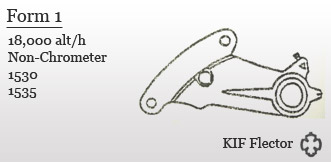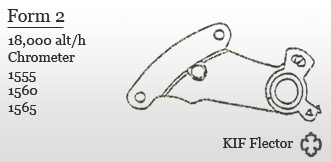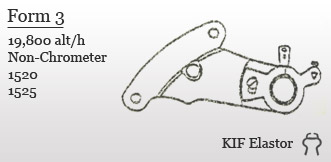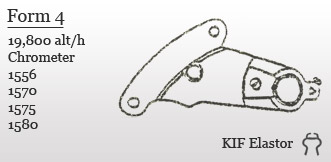



When servicing or buying a vintage watch you have to be sure that the movement/calibre number is correct for the model, dial and serial number. With a Rolex it may not always be possible to view the movement as the case back would be tight and sealed, though there are occasions such as markets, shows, auctions and websites where the case backs are loose and the movements can be viewed.
Movement identification is primarily for watch repairers when ordering parts. I have seen and worked on watches that are mismatched and the following information maybe of interest.
Most brands mark their movement/calibre number on the main plate underneath the balance. Rolex also marked their calibres there until the introduction of the Rolex Calibre 1030 where the movement/calibre number was moved to the Automatic Device Bridge. All modern Rolex calibres are marked in this way.
The calibres 1560, 1520, 1570 & 1580 have all derived from the basic calibre 1530 and share many of the parts that make up the movement. What tells them apart is not the engraved calibre number on the bridge but in fact the different forms of the balance wheel bridge and regulator. Do not totally ignore the calibre numbered bridge but this part is 100% interchangeable throughout the 15 series range.
I recently viewed a Rolex Comex on behalf of a client at a London Auction House. The model & serial number were fine but the bridge was marked 1555. This did make me suspicious but due to recognition of the balance bridge and regulator, I could tell the movement was correct and wouldn’t have deterred me from purchasing the watch. The problems that can arise with the 15 series is that certain numbered bridges are obsolete and if the part needs changing then you have to fit with what you can get.
There will be 1570 calibres with 1530 bridge markings or 1560 calibres with 1520 bridge markings. A problem can arise if for example model number 1002 has a 1530 calibre with a 1560 marked bridge.
The calibre 1560 is unique to all the others. Hard jarring of the case would throw the hairspring out and catch the regulator, the problem was corrected by fitting a safety pin. This modification then became standard in the production of this calibre. Some have it, some don’t.
One more identification point is if the last number of calibre has a 5 or 6, it means the movement is date only or day-date. Lastly just to add another detail, form 1&2 were fitted with KIF FLECTOR and form 3&4 were fitted with KIF ELASTOR as can be seen in the diagrams on the right-hand side.



